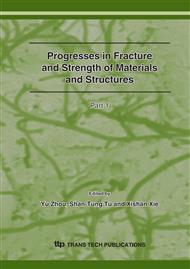p.1724
p.1729
p.1733
p.1737
p.1741
p.1745
p.1749
p.1753
p.1757
Plasma Surface Alloying Process of a Fe-W-Mo-Co Surface Age Hardening High Speed Steel
Abstract:
The surface age alloy of Fe-Co-W-Mo was formed on 25Cr2Mo2V steel by double glow plasma surface alloying technique. The effects of processing parameters on the depth, composition and constituent phases of surface alloying layer were investigated. Results indicate that the plasma processing parameters influenced significantly the surface alloying process. The composition of the surface layer nears W11Mo7Co23Fe59wt%, the depth of the surface alloying layer is 150μm after processing at 1100°C for 6hr. The microstructure of the cross section was composed of three sub-layers, that is, the deposition layer, the diffusion layer and the matrix. The constituent phases of the deposition layer were Fe7W6 type μ phase Fe2W type laves phase, Fe3Mo and a little amount of M2C type carbide, that of the diffusion layer were α-Fe and some intermetallics.
Info:
Periodical:
Pages:
1741-1744
Citation:
Online since:
September 2007
Authors:
Keywords:
Price:
Сopyright:
© 2007 Trans Tech Publications Ltd. All Rights Reserved
Share:
Citation:


